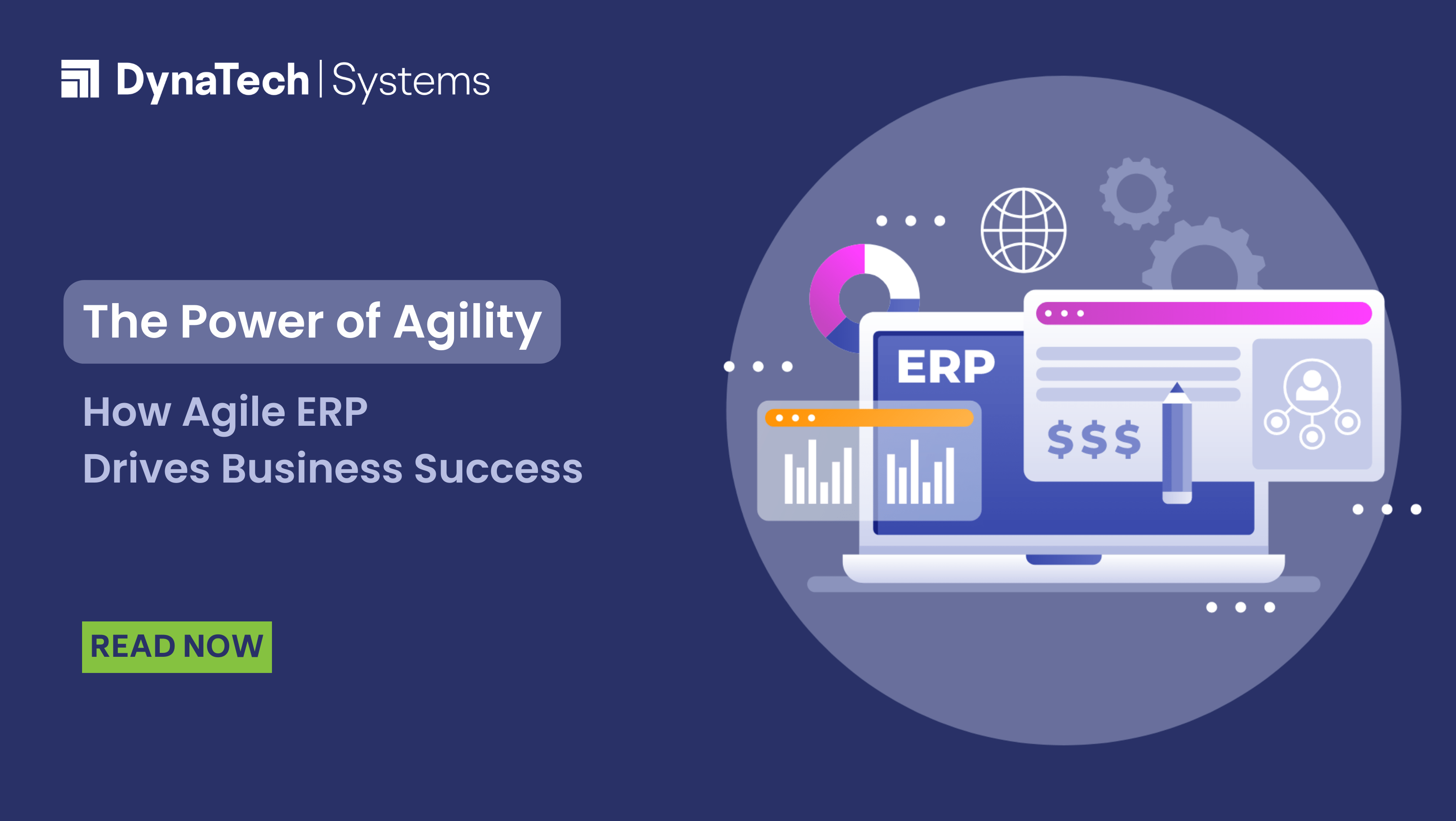The global business world is changing rapidly. The complexity of the business environment calls for the agility to gain upper hand in the competitive market. Turbulence at the global level could affect the finance and supply chain of the business. With the transforming digital businesses, legacy practices and management are challenged and required to adapt to the modern technology to embrace the deviations. After the pandemic, the need for the hybrid work models and shifting economy has open up doors of opportunities for the businesses. Traditional Enterprise Resource Planning (ERP) systems, while powerful, can sometimes be cumbersome and slow to respond to changing business needs.
How can businesses thrive in this radically changing global ecosystem?
There are three factors which can help business to thrive in the competitive market.
1. Visualize
For any business, it is crucial to stay updated in the market. Data and real-time insights can aid you making smart decisions in a cost-effective manner.
2. Operationalize
With the varying dynamics of the market, swiftly adapt to new systems to optimize data and Artificial Intelligence carefully.
3. Actualize
The core team should have efficient tools and collaboration with colleagues, partners, suppliers, and vendors to work smart and in required time.
Why has the need for the Agile ERP systems arisen?
Traditional, monolithic ERP systems needed a paradigm shift with the new-age, dynamics and flexible approach which is exactly the concept of Agile ERP systems for Optimized Business Operations. The design of these systems is meticulously curated to provide dynamics and flexible approach. With the evolving needs of the business, these modern ERP systems can be agile, responsive, and scalable. The core principles of agility – flexibility, adaptability and continuous improvement have been embraced by these systems to empower businesses to optimize their operations and achieve ulterior outcomes.
The fundamental philosophy of the Agile ERP systems is the Agile methodology which originated in the software development world but has since applied to various business segments consisting of ERP and operations. Iterative developments, customer-centricity, cross-functional collaboration, and improvement based on feedback are the basics of this methodology. These principles are seamlessly incorporated into Agile Systems for Optimized Operations, making them highly adjustable and capable of swiftly responding to changing business requirements.
Challenges faced by Enterprises
– In the current market scenario, the speed at which business can access data is crucial to stay competitive. Many ERP systems were originally designed for a business environment where monthly or quarterly reporting was sufficient and only management had privileged access to data. Simple metrics were used to measure business success. However, now markets and customer demands change rapidly, with evolutions happening on a weekly, daily, and even moment-by-moment basis. Immediate access to answers is essential, rather than waiting until the designated period. When disruptions occur, having latest information becomes critical.
– As organizations rely more on revenue from services of business, it becomes imperative for them to have the flexibility to experiment with and optimize billing models that deviate from traditional practices. However, many organizations find that their ERP systems hinder their business agility. Customization efforts to make the system align with the business requirements often result in complexity and heavy dependence on IT resources. This leads to systems that are fragile and difficult to use, posing challenges to the organization’s operations.
– Previously, many ERP systems were designed with flaws regarding the data access and was delivered through complex and confusing interfaces. Such systems were often built to cater to a small group of specialists who followed strict procedures, rather than encouraging exploration and learning. As a result, it has been manifested that employees actively avoid using ERP systems unless necessary. Employees often have to rely on IT or business analysts to access the data they need which leads to manual updates across multiple platforms or engaging with disparate systems to get a comprehensive understanding of the situation. To fully leverage the power of business data, it is essential to have technology that is user-friendly, adaptable to how people and teams work, and that employees actually want to use.
How businesses can envelope the ERP systems with Agile methodology?
Implementing Agile Systems for Optimised Operations requires a strategic and thoughtful approach. Here are some points to be considered while selecting the Agile ERP systems.
1. Evaluation of the current ERP system
Business should first assess the existing ERP module to identify its shortcomings and area of improvements. Some of the main factors to consider are scalability, system flexibility, adaptability, involvement as well as complete alignment with the necessities of the business.
2. Outlining the Agile ERP Strategy
To envelope the latest ERP systems that are agile, businesses should start by developing a clear and comprehensive strategy for implementation. The outline should incorporate the goals, objectives, and expected outcomes. Budget, available resources, timelines, and potential risks should be taken into deliberation before finalizing.
3. Selecting the perfect Agile ERP module
Selecting the ERP module that aligns with the Agile strategy of the business is critical. The ERP module should comply with the existing business requirements. Businesses should opt for the ERP solutions that offer customization, modularity, and scalability. The best solution in the current market is cloud-based ERP module for its personalization offering for optimized business operations.
4. Planning the Agile Implementation
Creation of an implementation that supports fundamental Agile principles such as cross-functional collaboration, iterative development, and customer-centricity should be an aim for the enterprise. Scope of each iteration, milestones, and feedback loop for constant development should be defined.
5. Fostering Collaboration
The ERP module should encourage the cross-functional collaboration among multiple teams and departments for the proactive involvement. Open communication, healthy feedback, and diverse collaboration culture should be stimulated so that all the stakeholders are aligned and work towards the same goal.
6. Emphasizing Change Management
Implementing Agile Systems for Optimised Operations may require changes in processes, workflows, and organizational culture. Prioritize change management efforts to ensure smooth adoption and implementation of the new ERP approach. Provide training, support, and resources to help employees adapt to the changes and embrace the Agile mindset.
7. Nonstop Monitoring for Refinement
Once the Agile ERP system is in place, make sure to continuously monitor its performance, gather feedback from users, and identify areas for refinement. Embrace the philosophy of continuous improvement and iterate on the system to optimize its operations based on real-world feedback and evolving business needs.
Why should businesses opt for the Agile ERP systems for Optimized Operations?
Multiple reasons can validate the necessity of the Agile ERP system for business for its optimized operations.
1. Detect Issues Quicker
Business can detect issues such as analysis of excess costs, inventory management, resource allocations at an early stage. This helps business to govern the underperformance issues.
2. Get a 360-degree view of the organization
With the Agile ERP systems, it is possible to breakthrough the data silos to get a unified picture of the organization. Due to the 360-degree view of the organization, speed, efficiency, profitability, and opportunities can be measured. Further, AI-powered data insights guide in identifying margin, market prospects, and cost efficiencies.
3. Accelerate Decision Making
By optimizing the data-driven insights, employees can resolve the problems as and when they arise, providing much faster and intelligent outcomes.
4. Boost Growth
Efficiently establish new subsidiaries or product lines with swift deployment, utilizing the capability to duplicate the setup of an existing legal entity for a new company. Seamless onboarding of new locations, while adhering to the company’s best practices, in a time-effective and cost-efficient manner becomes plausible with agility.
5. Swift Data-Driven Decisions
Seize opportunities during times of disruption by swiftly generating new entities as needed. This allows for agile establishment of new businesses, strategic acquisitions, or divestment of non-core assets to optimize shareholder value.
6. Comply with Changing needs of the business
Enable continuous access to cutting-edge technology by swiftly integrating new functionalities through technology partner ecosystems and low-code development. Because of this, business can assure that people always have the most up-to-date technology at their disposal, allowing for rapid incorporation of new features and capabilities.
7. Increased Work Efficiency
Business can lessen the time that is spent after collection of data, filtering, and reporting. Manual tasks can be reduced affecting the work efficiency.
8. Empower People
Employee can utilize the AI-driven data based on their requirements. It will nurture the proactive culture where employees can excel in problem-solving.
9. Efficient Collaboration
Several departments of the organization can come aboard on a unified single platform to provide excellent results without any confusion and hinderances.
Conclusion
Business agility relies on the capability to conceptualize, implement, and execute necessary changes before they impact the customers. Achieving this requires leveraging data insights, adaptable systems, and collaborative teams. Composable, agile, and modern ERP solutions empower CFOs and COOs to digitally transform their businesses and effectively address current challenges. With Microsoft Dynamics 365, organizations can drive operational efficiency, cost reduction, and nurture a hyperconnected business that seamlessly integrates people, data, and processes across the organization, enabling all teams to swiftly adapt and innovate. Connect with DynaTech Systems at sales@dynatechconsultancy.com for more assistance!




























